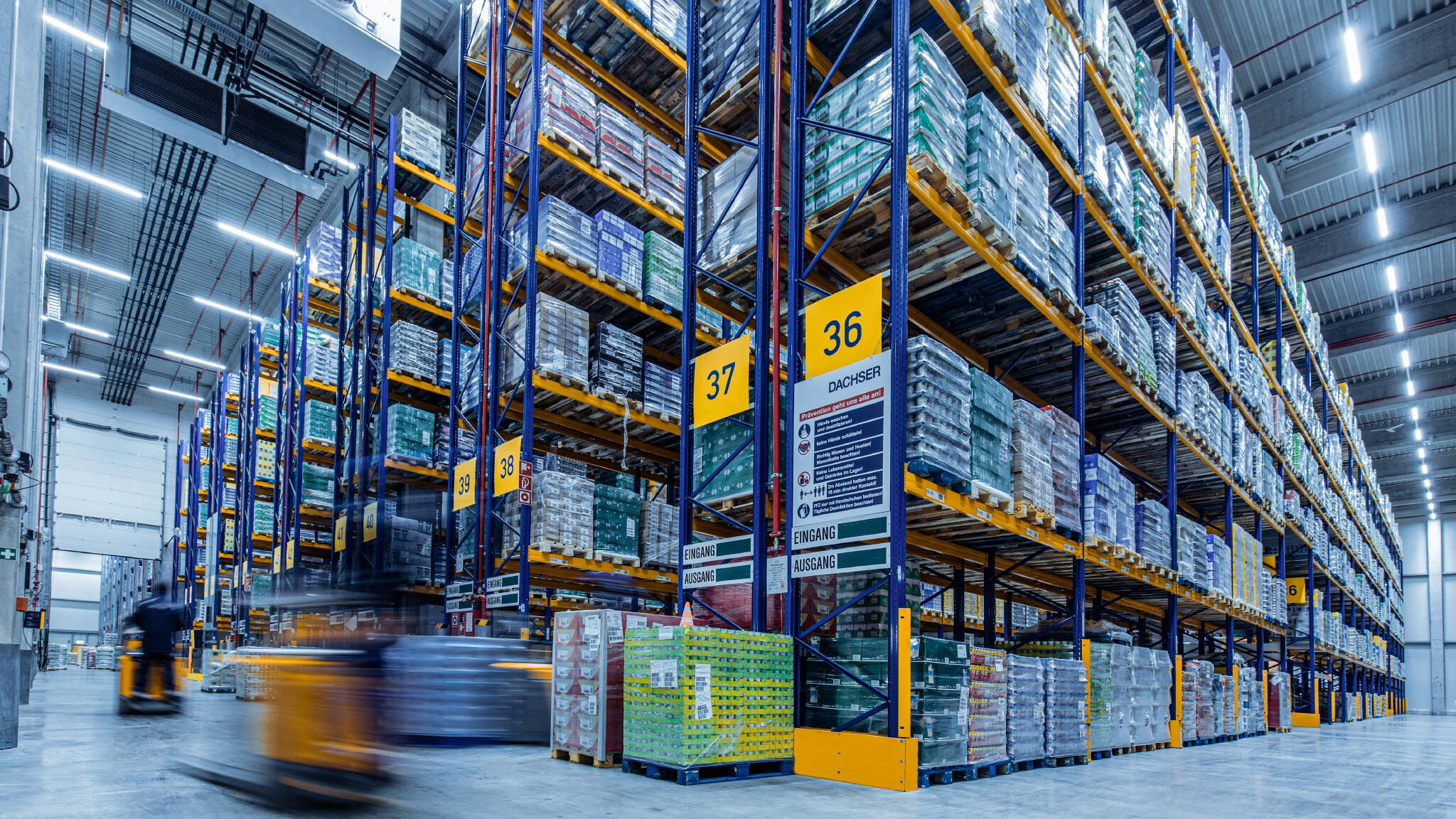Ready to turn insight into action?
We help organisations transform ideas into measurable results with strategies that work in the real world. Let’s talk about how we can solve your most complex supply chain challenges.

In today's highly competitive business environment, CFOs in sectors such as retail, manufacturing, healthcare, and FMCG are under pressure to reduce both fixed and variable costs while maintaining high service levels. One of the most effective ways to achieve these goals is through supply chain network optimisation. By reviewing and optimising the supply chain network, businesses can reduce overheads, improve efficiency, and drive long-term cost efficiencies.
In this article, we will discuss the importance of supply chain network optimisation, the techniques that can be used to reduce both fixed and variable costs, and the benefits that CFOs in Australia and New Zealand can achieve by optimising their supply chain footprint. We will also explore how Trace Consultants can help organisations on their journey to supply chain excellence.
The Importance of Supply Chain Network Optimisation
Supply chain network optimisation involves evaluating and redesigning the supply chain network to ensure that it is efficient, cost-effective, and capable of meeting customer demand. By optimising the supply chain network, businesses can reduce both fixed and variable costs, improve service levels, and enhance overall supply chain performance.
Key Benefits of Supply Chain Network Optimisation
- Reduced Fixed Costs: Optimising the supply chain network can help reduce fixed costs, such as warehouse rent and infrastructure expenses, by consolidating facilities and eliminating redundant assets.
- Lower Variable Costs: By optimising transportation routes, inventory levels, and distribution processes, businesses can reduce variable costs, such as fuel, labour, and handling expenses.
- Improved Service Levels: A well-optimised supply chain network ensures that products are delivered to customers in a timely manner, improving customer satisfaction and enhancing competitiveness.
- Enhanced Flexibility and Resilience: Optimising the supply chain network helps businesses respond more effectively to changes in customer demand, market conditions, or disruptions, enhancing overall supply chain resilience.
Techniques for Reducing Costs through Supply Chain Network Optimisation
1. Warehouse Network Optimisation
Warehouse network optimisation involves reviewing the number, location, and size of warehouses to ensure that they are strategically positioned to minimise costs and maximise service levels. By optimising the warehouse network, businesses can reduce fixed costs, improve inventory management, and enhance overall efficiency.
Key Techniques for Warehouse Network Optimisation
- Facility Consolidation: Consolidating multiple warehouses into fewer, larger facilities can help reduce fixed costs, such as rent, utilities, and administrative expenses. Facility consolidation also simplifies inventory management and reduces duplication of effort.
- Strategic Location Selection: Choosing the right locations for warehouses is critical for reducing transportation costs and improving delivery times. By locating warehouses closer to key markets or suppliers, businesses can minimise transportation distances and reduce fuel costs.
- Cross-Docking: Cross-docking is a warehouse optimisation technique that involves unloading goods from incoming trucks and loading them directly onto outbound trucks, without storing them in the warehouse. This reduces storage costs, minimises handling, and improves the speed of delivery.
Financial Impact of Warehouse Network Optimisation
- Reduced Fixed Costs: Facility consolidation and strategic location selection help reduce fixed costs, such as rent and utilities, by eliminating redundant facilities and optimising the use of existing assets.
- Lower Inventory Holding Costs: By optimising the warehouse network, businesses can reduce excess inventory and lower holding costs, freeing up working capital.
- Improved Efficiency: Warehouse network optimisation helps streamline inventory management, reduce handling, and improve overall efficiency, leading to cost savings.
2. Route Optimisation for Transport
Route optimisation is a key technique for reducing variable costs in transportation. By planning the most efficient routes for deliveries, businesses can reduce fuel consumption, minimise travel distances, and improve delivery times.
Key Techniques for Route Optimisation
- Dynamic Routing: Dynamic routing involves adjusting delivery routes in real time based on factors such as traffic conditions, weather, and customer availability. This ensures that drivers take the most efficient route, minimising delays and reducing fuel consumption.
- Backhauling: Backhauling involves using empty trucks returning from a delivery to carry additional goods. This helps maximise vehicle utilisation, reduce the number of empty miles travelled, and lower transportation costs.
- Hub-and-Spoke Model: The hub-and-spoke model involves using a central hub for consolidation before distributing goods to regional locations. This approach can help reduce transportation distances and improve efficiency.
Financial Impact of Route Optimisation
- Reduced Fuel Costs: Route optimisation helps minimise fuel consumption by reducing travel distances and avoiding traffic congestion, leading to significant cost savings.
- Lower Labour Costs: By optimising routes and reducing travel times, businesses can lower labour costs associated with drivers and transportation staff.
- Improved Delivery Performance: Efficient route planning ensures that deliveries are made on time, improving customer satisfaction and reducing the costs associated with missed deliveries.
3. Make vs. Buy Decisions
Evaluating make vs. buy decisions is an important aspect of supply chain network optimisation. Businesses must determine whether it is more cost-effective to produce goods in-house or outsource production to third-party suppliers. By making informed make vs. buy decisions, CFOs can optimise resource utilisation, reduce costs, and improve overall supply chain efficiency.
Key Considerations for Make vs. Buy Decisions
- Cost Analysis: Evaluating the total cost of ownership, including production, labour, and overhead costs, helps businesses determine whether it is more cost-effective to produce goods in-house or outsource production.
- Core Competencies: Businesses should focus on their core competencies and consider outsourcing non-core activities to specialised suppliers. This helps reduce overheads and allows the business to focus on value-added activities.
- Capacity and Flexibility: In-house production may provide greater control and flexibility, but it also requires significant investment in facilities, equipment, and labour. Outsourcing can provide greater scalability and reduce fixed costs.
Financial Impact of Make vs. Buy Decisions
- Reduced Fixed Costs: Outsourcing production to third-party suppliers can help reduce fixed costs, such as facility and equipment expenses, by eliminating the need for in-house production capabilities.
- Optimised Resource Utilisation: By focusing on core competencies and outsourcing non-core activities, businesses can optimise resource utilisation and improve overall efficiency.
- Lower Variable Costs: Outsourcing production can help reduce variable costs, such as labour and materials, by leveraging the economies of scale and expertise of third-party suppliers.
How CFOs Can Benefit from Supply Chain Network Optimisation
1. Reducing Overheads
Supply chain network optimisation helps CFOs reduce both fixed and variable overheads by consolidating facilities, optimising transportation routes, and making informed make vs. buy decisions. By reducing overheads, businesses can improve profitability and free up capital for strategic investments.
2. Improving Service Levels
A well-optimised supply chain network ensures that products are delivered to customers in a timely manner, improving service levels and enhancing customer satisfaction. By strategically positioning warehouses, optimising transportation routes, and reducing lead times, businesses can meet customer expectations and gain a competitive edge.
3. Driving Long-Term Cost Efficiencies
Supply chain network optimisation is not just about short-term cost reduction—it is also about driving long-term cost efficiencies. By reducing fixed and variable costs, improving resource utilisation, and enhancing overall efficiency, businesses can achieve sustainable cost savings and build a more resilient supply chain.
Case Study: Supply Chain Network Optimisation for an Australian Retailer
An Australian retail company faced challenges related to high transportation costs, excess inventory, and inefficient warehouse operations. The company decided to implement a supply chain network optimisation initiative to reduce costs, improve efficiency, and enhance service levels.
Approach
- Warehouse Network Optimisation: The company consolidated its warehouse network, reducing the number of facilities and strategically positioning warehouses closer to key markets.
- Route Optimisation: The company used route optimisation software to create dynamic delivery routes that minimised travel distances, reduced fuel consumption, and improved delivery times.
- Make vs. Buy Analysis: The company conducted a make vs. buy analysis to determine whether it was more cost-effective to produce certain products in-house or outsource production to third-party suppliers.
Results
- Reduced Fixed and Variable Costs: The company achieved a 25% reduction in fixed costs by consolidating facilities and a 15% reduction in variable transportation costs through route optimisation.
- Improved Service Levels: The optimisation initiative led to improved delivery performance, reduced lead times, and enhanced customer satisfaction.
- Enhanced Supply Chain Resilience: By optimising the supply chain network, the company was better able to respond to changes in customer demand and market conditions, enhancing overall resilience.
Challenges in Supply Chain Network Optimisation
1. High Initial Investment Costs
Implementing supply chain network optimisation initiatives, such as facility consolidation, route optimisation software, and make vs. buy analysis, requires a significant initial investment. However, the long-term benefits in terms of cost savings, efficiency gains, and improved service levels often outweigh these initial costs.
2. Data Availability and Quality
Data is critical for supply chain network optimisation, from warehouse location analysis to route planning. Ensuring that data is accurate, up-to-date, and accessible is crucial for making informed decisions and optimising the supply chain network.
3. Balancing Cost Reduction with Service Levels
While reducing costs is a primary objective of supply chain network optimisation, it should not come at the expense of service levels. CFOs must balance cost-saving initiatives with maintaining or improving customer service to ensure that they do not negatively affect the customer experience.
Supply chain network optimisation is a powerful tool for CFOs in Australia and New Zealand looking to reduce fixed and variable costs, improve service levels, and drive long-term cost efficiencies. By adopting techniques such as warehouse network optimisation, route optimisation, and making informed make vs. buy decisions, businesses can achieve significant cost savings and enhance overall supply chain performance.
Whether it's consolidating facilities, optimising transportation routes, or evaluating production options, supply chain network optimisation enables businesses to build a more efficient, resilient, and cost-effective supply chain. Despite the challenges, the benefits of supply chain network optimisation make it a worthwhile investment for businesses looking to improve their bottom line and achieve supply chain excellence.
Ready to optimise your supply chain network and drive cost efficiencies? Trace Consultants is here to help you navigate the complexities of supply chain optimisation and develop a tailored solution that meets your unique business needs.
Ready to turn insight into action?
We help organisations transform ideas into measurable results with strategies that work in the real world. Let’s talk about how we can solve your most complex supply chain challenges.








